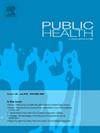Austerity and waiting times: Evidence on reproductive health care delays among young millennials in deprived areas
IF 3.9
3区 医学
Q1 PUBLIC, ENVIRONMENTAL & OCCUPATIONAL HEALTH
引用次数: 0
Abstract
Objectives
Waiting times in the English National Health System (NHS) have steadily increased since 2010 and reducing them has become a priority for the government and public. This study examines changes in hospital waiting times for millennials throughout adolescence and young adulthood, exploring their association with the 2010 austerity measures.
Study design
We use administrative data from Hospital Episode Statistics for participants in the Next Steps survey, a longitudinal study following individuals born between 1989 and 1990. We focus on trends in outpatient and emergency hospital services used for ages 14–17 to 27 between 2003 and 7 and 2017.
Methods
We employ an event-study interrupted time series with panel data, controlling for changes in trend due to the 2008 macroeconomic shock and allowing for autocorrelation and seasonality.
Results
Our results show that trends in waiting times remained unchanged during the 2008 Great Recession. Following the 2010 austerity cuts, while overall waiting times for emergency and outpatient hospital care only increased by a small amount, waiting times for reproductive health care substantially increased among young people living in the most deprived areas.
Conclusions
Findings suggest the presence of inequities in timely access to essential healthcare services, particularly in reproductive health care services (including obstetric and sexual health), which could potentially have substantial health consequences in the short and long run for young people living in more deprived areas. Policymakers implementing budget cuts in healthcare systems may need to consider allocating resources to mitigate and compensate for any detrimental health consequences.
求助全文
约1分钟内获得全文
求助全文
来源期刊

Public Health
医学-公共卫生、环境卫生与职业卫生
CiteScore
7.60
自引率
0.00%
发文量
280
审稿时长
37 days
期刊介绍:
Public Health is an international, multidisciplinary peer-reviewed journal. It publishes original papers, reviews and short reports on all aspects of the science, philosophy, and practice of public health.
 求助内容:
求助内容: 应助结果提醒方式:
应助结果提醒方式:


